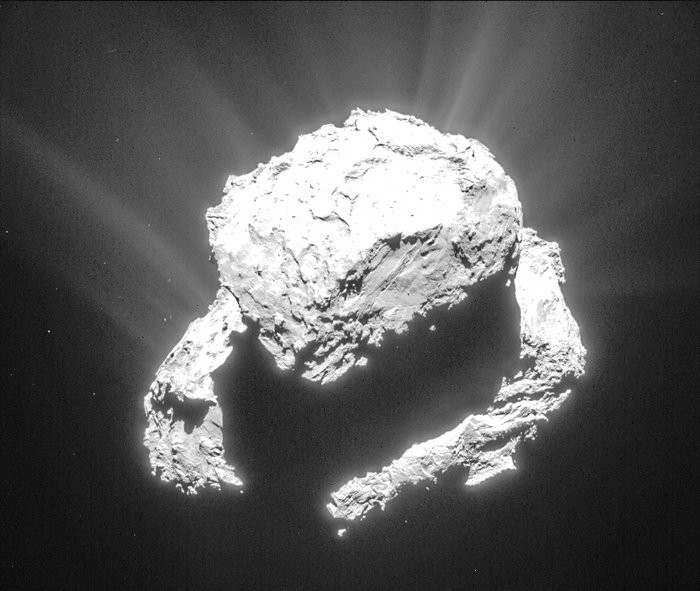Philae could uncover alien life in the form of microorganisms on Rosetta comet 67/P

Alien life may be discovered by ESA's Rosetta mission's Philae lander on Comet 67P/Churyumov–Gerasimenko, astronomers have said.
Scientists from the University of Cardiff and the Buckingham Centre for Astrobiology have said microorganisms could be the cause of the comet's unusual features.
Announcing their ideas at the National Astronomy Meeting at Venue Cymru in Llandudno, Wales, Max Wallis said microorganisms might be found living in cracks in the ice and 'snow' found on the comet.
Comet 67/P is an unusual "duck shape", scientists say. Data from the Rosetta mission shows it has a black crust, underlying ice and what appears to be large smooth "seas", mega-boulders on the surface and flat-bottomed craters.
Recently, scientists studying the comet said the deep, circular pits on the surface were probably massive sinkholes, created in a similar way to those seen on Earth. The team from the University of Maryland said these deep pits probably formed when ice beneath the surface heated up and turned to gas, creating a void that eventually grew so large their ceiling collapsed under their own weight.
The Cardiff and Buckingham scientists say the crater lakes identified are refrozen bodies of water covered with organic debris.
Wallis and colleague Chandra Wickramasinghe say the features of Comet 67/P are consistent with a mix of ice and organic material that combine as a result of the sun's warming at which point active microorganisms can be supported.

Their model suggests these microorganisms probably need liquid water to colonise the comet and that those creating antifreeze salts would be particularly successful at adapting to these extremely cold conditions.
As the comet edges ever closer to the sun, the scientists say the rising temperatures should cause the microorganisms to become increasingly active.
The astronomers point out that some experts believe comets brought life to Earth and other planets during collisions billions of years ago. They say the comet could be home to micro-organisms similar to the "extremophiles" found living in some of the most inhospitable areas of our planet.
Wallis said: "Rosetta has already shown that the comet is not to be seen as a deep-frozen inactive body, but supports geological processes and could be more hospitable to micro-life than our Arctic and Antarctic regions."
Wickramasinghe added that life is likely to exist elsewhere in the universe, but providing evidence of it is the big challenge. He told the Guardian: "Five hundred years ago it was a struggle to have people accept that the Earth was not the centre of the universe. After that revolution our thinking has remained Earth-centred in relation to life and biology. It's deeply ingrained in our scientific culture and it will take a lot of evidence to kick it over."
© Copyright IBTimes 2025. All rights reserved.






















